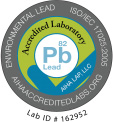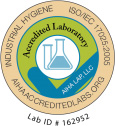 No matter how many protective measures we take, we are always at risk of catching various germs, bacteria, and viruses and hence, are always exposed to a variety of health problems.
No matter how many protective measures we take, we are always at risk of catching various germs, bacteria, and viruses and hence, are always exposed to a variety of health problems.
One important factor/threat that has become unavoidable is environmental pollution, specifically the contamination of air.
The air that we breathe in has become so polluted that the chances of catching diseases and developing health problems have increased exponentially thanks to our modern life styles.
According to experts and research studies, the indoor air i.e. the air within our homes, offices, and other buildings, is highly polluted. Contrary to the common belief, recent evidences have indicated that indoor air can be more contaminated than outdoor air and since most of us spend a majority of our time indoors, we are at greater risk of developing various health issues due to the contaminants present in indoor air.
The longer we stay indoors, the greater the chances of exposure to diseases and contaminants. This can be more dangerous for children and elderly members of our families as they spend most of their time indoors.
Due to the complexity of creating standards for indoor air quality, some areas of testing have an absence of published standards. This absence of enforceable standards may lead to overlooking important areas of testing, potentially increasing the risk to occupants due to a lack of understanding what constitutes good indoor air quality.
Contaminants Present In Indoor Air
If you think you are safe from environmental hazards when you are indoors, take a look at the following list of contaminants commonly found in indoor air:
- Carbon Monoxide
- Carbon Dioxide
- Nitrogen Dioxide
- Dust mites, insects, molds, bacteria, yeast, and pet dander, and other allergens capable of causing allergic reactions
- Fungus
- Dead skin cells
- Humidity that is favorable environment for the growth of various bacteria, fungus, and molds
- Dust
- Pollen
- Aldehydes
- Radon
- Second-Hand smoke
- Volatile Organic Compounds
- Asbestos fibers from tiles, heating systems and different types of insulation materials
- Pesticides
- Ozone that is produced from electronic motors, photocopy machines, and electrostatic air cleaners
- Regulated metals and organics used in construction, furnishing and cleaning materials
What to Do?
It is becoming increasingly important to get your homes, offices, and other buildings checked for air quality to make sure the inhabitants and workers stay in good health. For air and other types of laboratory testing in the Richmond area, contact SanAir Technologies Laboratory to get the best service and accurate results.
Sources
http://www.bluepointenvironmental.com/indoor-air-quality-testing/
https://www.epa.gov/indoor-air-quality-iaq/inside-story-guide-indoor-air-quality
http://www.mnn.com/family/protection-safety/stories/7-reasons-to-consider-indoor-air-quality-testing
https://www.absoluteresourceassociates.com/services/air-quality.cfm












